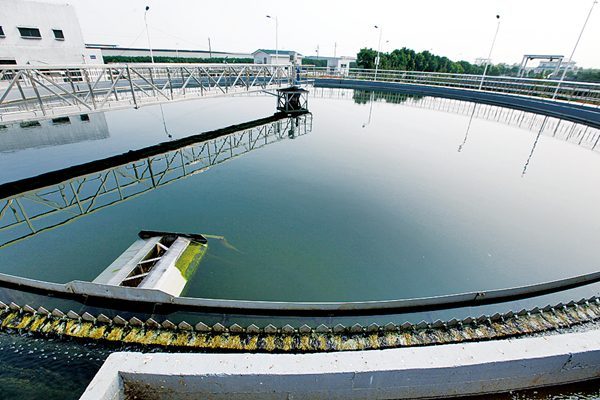A corrosive fluid is a fluid that erodes and damages the materials it comes into contact with. Metal, stone, glass and even certain types of plastic are all susceptible to corrosive fluids or chemicals.
Corrosive liquids or chemicals are usually classified into six categories: strong acids, weak acids, strong bases, weak bases, dehydrating agents and oxidising agents. Some chemicals may fall into more than one category, for example sulphuric acid is both a strong acid and a dehydrating and oxidising agent. Corrosive materials may also fall into other hazard categories, such as toxic (poisonous) or flammable. It follows that corrosive liquids pose a danger to humans.
When pumping hazardous liquids in oil and gas dewatering, such as flammable, combustible, toxic and corrosive chemicals, several factors must be taken into account. These factors are crucial in selecting the right chemical pump for the job.
Chemical pump selection
Firstly, the characteristics of the fluid being pumped need to be considered. It needs to be determined what type of fluid is being pumped and what the characteristics of this fluid are. Key fluid data includes details such as concentration, specific gravity, temperature resistance, viscosity, flammability (if any) and solids content.
To ensure that the pump is properly sized, the user must also consider the pump manufacturer’s head-capacity curve. Pump curves (also known as pump selection curves, pump efficiency curves or pump performance curves) provide the information needed to determine the pump’s ability to produce flow under conditions that affect the performance of the machine.
An accurate reading of the pump curve (or consultation with a pump specialist) ensures that the user gets the correct pump for the application variables, such as: head (as the energy required to discharge water from the pump to an equivalent height expressed in metres); flow (the volume of liquid to be moved in a given time period, i.e. litres per minute [L/min] or cubic metres per hour [m3/h]); revolutions per minute (rpm); impeller size, in relation to pump performance-related; power; efficiency.
Selection of magnetic pumps
Magnetic pumps are the most common equipment used to transfer corrosive fluids. Magnetic pumps are energy efficient, available in either vertical or horizontal versions and in a wide range of sizes, designed to pump flows from a few litres per minute to tens of litres per minute.
When pumping corrosive liquids, the magnetic pump has a simple structure and no wearing parts such as mechanical seals and bearings, so it has high reliability and stability and can operate stably for a long time.
With corrosive fluids, leaks can be harmful to humans and can also cause extensive damage to the surrounding infrastructure. Magnetic pumps are magnetically driven, eliminating the need for mechanical seals and avoiding the risk of leaks, which can effectively prevent environmental and human hazards from fluid leakage.
In addition, there are downtime and cost considerations (or mean time between failures) when the pump must be stopped and repaired. The low maintenance costs of magnetic pumps, the lack of frequent replacement of wearing parts such as mechanical seals and bearings and the simplicity and convenience of maintenance make them a reliable, safe and economical choice when transporting corrosive liquids.
Suitable materials for chemical pump bodies
Choosing the right material for pump construction is very important, especially when moving corrosive fluids. Otherwise, components that encounter corrosive fluids (e.g. gaskets and O-rings) can corrode, thus affecting the performance and service life of the pump.
Corrosion resistant materials commonly used in magnetic pumps include polyvinylidene fluoride (PVDF), polytetrafluoroethylene (PTFE), fluoroelastomer (FKM), polypropylene (PP), polyethylene (PE) and ceramics. These materials have excellent corrosion resistance and can withstand most acids, alkalis, salts and other corrosive liquids, and are therefore commonly used in pump bodies, impellers, seals, O-rings, bearings and other components of magnetic pumps. Choosing the right material will ensure pump performance and longevity, and improve pump reliability and stability.
Ask QEEHUA PUMP professionals
While this is not a comprehensive guide to pump selection when transporting corrosive fluids, it will hopefully provide the user with a snapshot of the challenges faced when selecting a pump and some of the key factors that need to be considered. There are many factors to consider, from the type of fluid being conveyed to choosing the right pump material of construction.
The user should first gather information about the fluid to be pumped, including the nature of the fluid, temperature, viscosity, pH value, solids content, etc. Secondly, gather information about the application requirements and environmental conditions, such as flow rate, head, pressure, temperature, altitude, ambient temperature, etc.
Then consult the professionals at QEEHUA PUMP, who can advise on the selection of the right pump for the job, taking into account all the above factors. Our professionals can advise you on the best pump solution for your specific needs and application environment.


